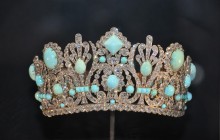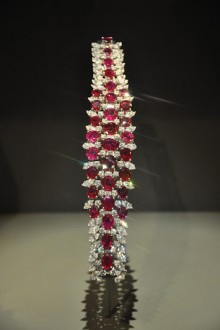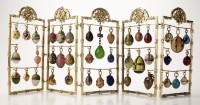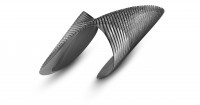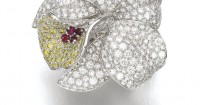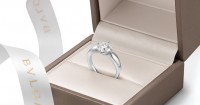Beyond the Hope Diamond: Exploring the National Gem Collection
Exhibit boasts all manner of interesting pieces of celebrity and historical lore
BY CAROLYN MCLEAN ROBBINS
Travelers to Washington’s Smithsonian museums know that they can expect to see several things: airplanes, Dorothy’s ruby red slippers, dresses of many First Ladies, and of course, the famed Hope Diamond at the National Museum of Natural History, which is part of the National Gem Collection at the Janet Annenberg Hooker Hall of Geology, Gems, and Minerals.
What might they not know? The hall, one of the Smithsonian’s most popular exhibits, is a massive collection of more than 10,000 gems and 375,000 mineral specimens—the largest collection of its kind in the world. Standout items include the Hooker Emerald Brooch, the Star of Asia Sapphire and a full exhibition discussing the birth and evolution of the solar system, offering unique glimpses at the world’s most famous gemstones, grouped by shape, color and other characteristics.
- Likely a wedding gift in 1810 from Napoleon I to his second wife, this piece boasts more than 1,000 diamonds. Between 1956 and 1962, Van Cleef & Arpels replaced its original emeralds with 79 Persian turquoise stones.
Tour the glass cases to peruse a collection that would rival the best in the world – as impressive, many say, as the Queen’s jewels in England. A single room houses:
- Marie Antoinette’s diamond earrings
- a 263-carat diamond necklace and tiara given by Napoleon to Empress Marie-Louise
- the Janet Annenberg Hooker fancy yellow diamonds
- 2 topaz crystals from Brazil, weighing 111 and 70 pounds respectively, and a 23,000-carat cut-and-polished topaz
- a 423-carat sapphire set in diamonds
- the DeYoung red and pink diamonds
- the 127-carat Portuguese diamond, the largest cut diamond in the collection
- the Rosser Reeves ruby
- the Carmen Lucia Ruby, weighing 23.1-carats, is one of the largest faceted Burmese rubies known to exist. The stone is set in platinum and flanked by 2 triangular colorless diamonds measuring 1.1 and 1.27 carats.
Because of the exhibit’s popularity, it’s suggested to visit early in the day or late in the evening, as midday tours often crowd the cases. Spend time walking through the exhibit as a whole, as each piece is housed in an individual case, with a small plaque or plate explaining the piece’s history and relevance to the museum.
- In this Ruby and Diamond Bracelet, 31 Burmese rubies are the deep color of “pigeon blood.” This piece was reset by Harry Winston, Inc., around 1950.
Some of the museum’s best pieces are actually new additions, given to the gallery in celebration of its 100th anniversary. These pieces include the Cullinan Blue Diamond, a 5.32 carat blue diamond adorned with 251 other diamonds, given as a “consolation” gift by South African diamond magnate, Thomas Cullinan, to his wife after promising that he would find her the largest diamond in the world. That diamond, the famed Cullinan stone, weighing 3,106.75 carats, was given to England’s King Edward in 1905. Today, the diamond is displayed next to the world’s most infamous necklace, the Hope Diamond.
Another “not miss” piece is the Royal Butterfly brooch, a three-dimensional objet d’art set with 2,318 gems totaling a near 77 carats. One of its most intriguing design attributes is the use of four large rough diamond slices atop a layer of faceted diamonds, forming the centers of the wings. Created in 209 and donated to the collection in 2010, this magnificent piece features sapphires, rubies, fancy-colored diamonds, and tsavorite garnets.
Beyond the National Gem collection, it would be rather simple to add the following destinations to your visit, as all are housed on the museum’s second floor:
- The Minerals and Gems Gallery features some 2,000 specimens grouped by shape, color, growth, and other characteristics.
- The Mine Gallery features a re-creation of 4 mines showing crystal pockets and ore veins in created dioramas.
- The Plate Tectonics Gallery illustrates how earthquakes, mountain chains, and volcanoes result from the constantly shifting plates of the Earth’s surface and features the “Plate Tectonics Theater” and interactive computer stations.
- The Moon, Meteorites, and Solar System Gallery explores the birth and evolution of our solar system through films, computer interactives, and specimens and features moon rocks, a touchable Mars rock, meteorites, and stardust.
- The Rocks Gallery focuses on how rocks record and verify the geological processes that have shaped our planet — erosion and deposition, which destroy and create rocks on Earth’s surface and heat and pressure, which transform and melt rocks within the Earth.
-September 2012





